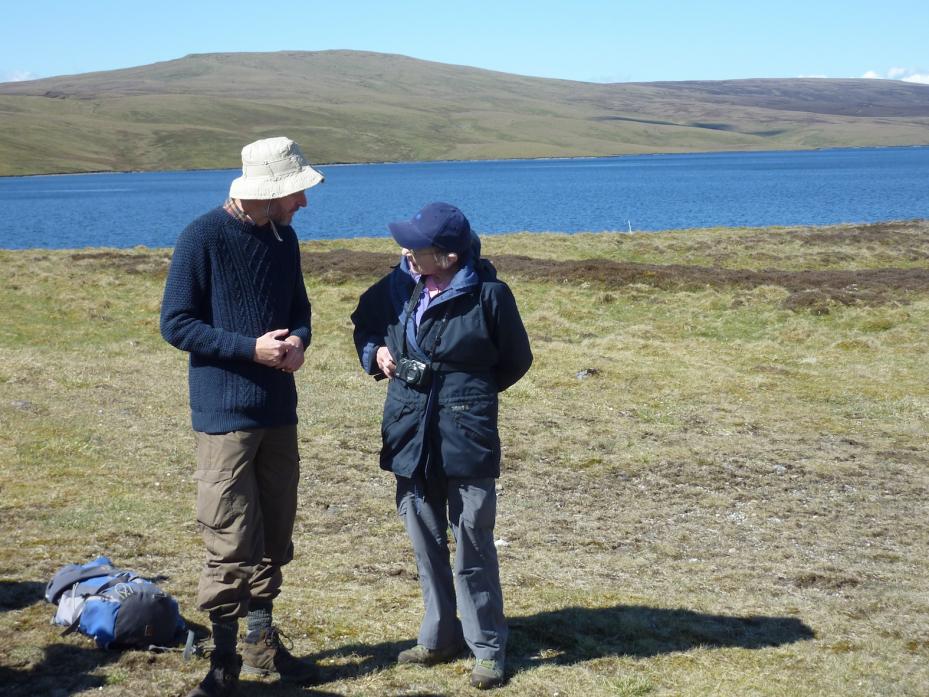
TEESDALE’S famous blue spring gentian and some other rare plants are disappearing fast from the upper dale, according to the results of a new survey.
The alarming evidence was presented at the first annual meeting of the Teesdale Special Flora Trust, an organisation established by renowned botanist Dr Margaret Bradshaw.
Dr Bradshaw told the meeting: “These plants are direct descendants of what was there 10,000 years ago – we should treasure them and so should the whole country.”
Comparisons with her earlier surveys in the 1970s showed a “shocking” decline in the extent of many of the rarest plants, including Teesdale sandwort, dwarf milkwort and mountain everlasting.
Dr Bradhsaw said she suspected that less grazing in recent years, which allows vegetation to grow tall, may well have contributed to the loss of the small, light-loving plants.
The meeting heard the detailed results from professional botanist John O’Reilly, who has surveyed more than 8,500 10x10sq m plots of Widdybank Fell so far, resulting in about 18,000 new botanical records.
Despite the loss of some of the rarer species, there were some encouraging finds, including the first sighting of Ostenfield’s eyebright in the Pennines and some strong populations of false sedge and alpine rush.
Tricia Snaith, speaking for the Upper Teesdale Botany Group, explained that the group, started by Dr Bradshaw 20 years ago, has now joined forces with the trust.
Organisation of activities is being taken on by members, led by a management committee, but its work continues as before.
Despite the Covid-19 restrictions, the group has had a full season of meetings via Zoom, with presentations from members. Fieldwork was due to start on May 24, with members observing and recording the Tees bank flora. The group also has a Facebook page: Upper Teesdale Botany Group.
Trustees Bruce Wilkinson and Lizzie Maddison outlined the trust’s achievements to date, which include gaining charitable status, preparing a website to be launched in June and applying for funding from the Government’s Green Challenge Recovery Fund.
The Plants on the Edge bid, in partnership with Northern Heartlands, aims to extend the survey work to Cronkley Fell and trial conservation techniques such as scarifying and mowing. A decision is due in July.
Mr Wilkinson said: “It’s also vital that we engage the wider public in understanding and appreciating the unique plant life here.”
Simple introductions, such as field trips and presentations, plus activities with young people, will be a major element of the bid, he said.
Fellow trustee Lizzie Maddison emphasised the value of enthusing more people, regardless of the outcome of the bid.
“We will encourage and support volunteers, who will be able to make an important contribution to the recording and conservation of the rare flora,” she said.
Treasurer Geoff Herbert, a well-known local photographer, presented the trust’s accounts. In the previous year, donations were received from Natural England, and the Wild Flower Society, plus a great many individuals via a Just Giving appeal.
However, at least £5,000 must be raised this year to maintain the survey work. Dr Bradshaw – now 95 – asked for suggestions for a fundraising challenge she could undertake.
Several suggestions for extending the trust’s scope came from those attending, such as working with artists and photographers and ways to link with secondary age pupils.
Closing the meeting, chairman Dr Tom Gledhill said he felt the trust and the botany group had made great progress in a difficult year and thanked all those attending.
For more details about the survey work, go to a YouTube presentation by John O’Reilly to the Natural History Society of Northumbria, titled The Upper Teesdale Botanical Hotspot at https://www.you tube.com/watch?v=oeYuJiWEYOc&t=114s.





